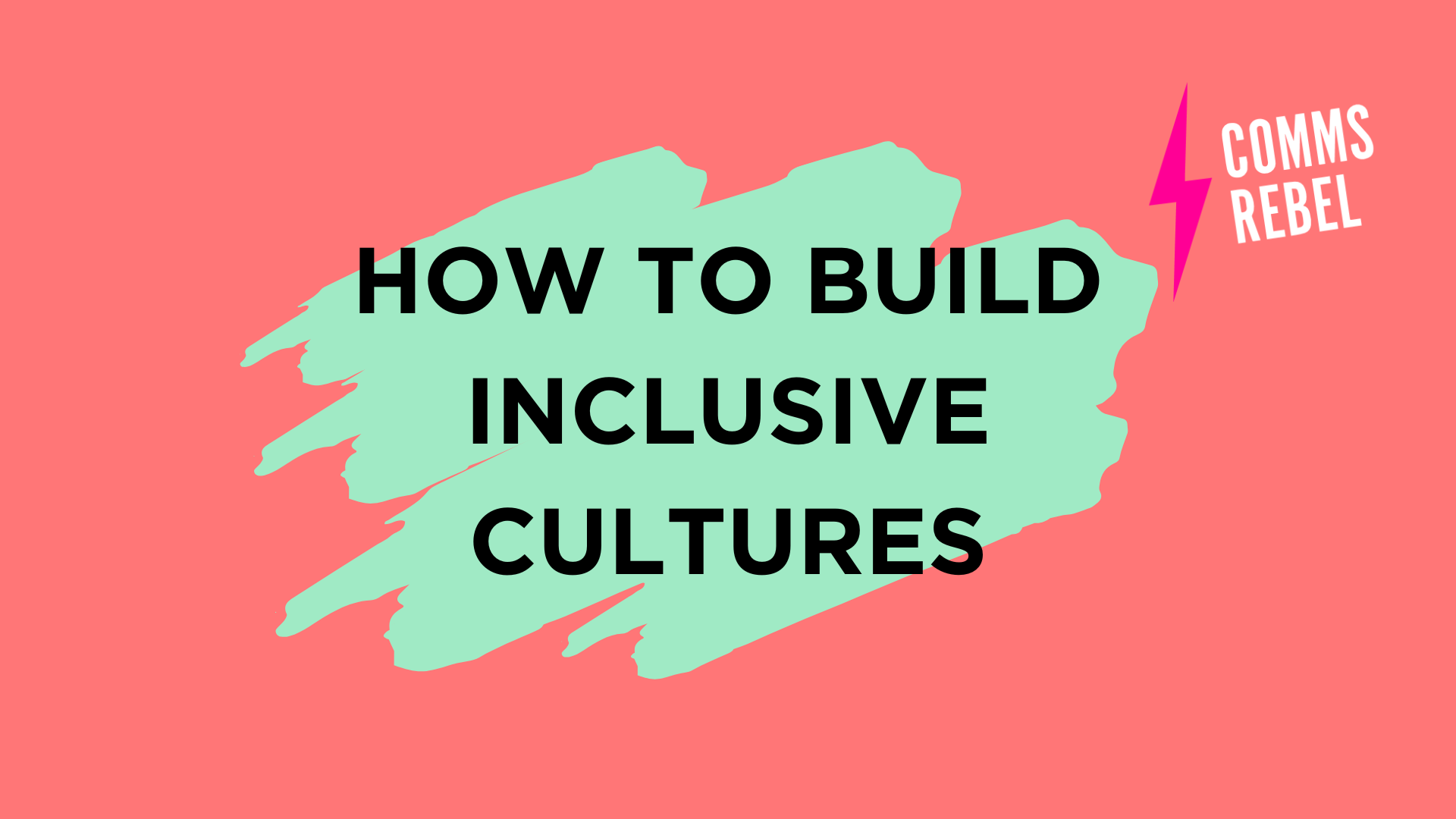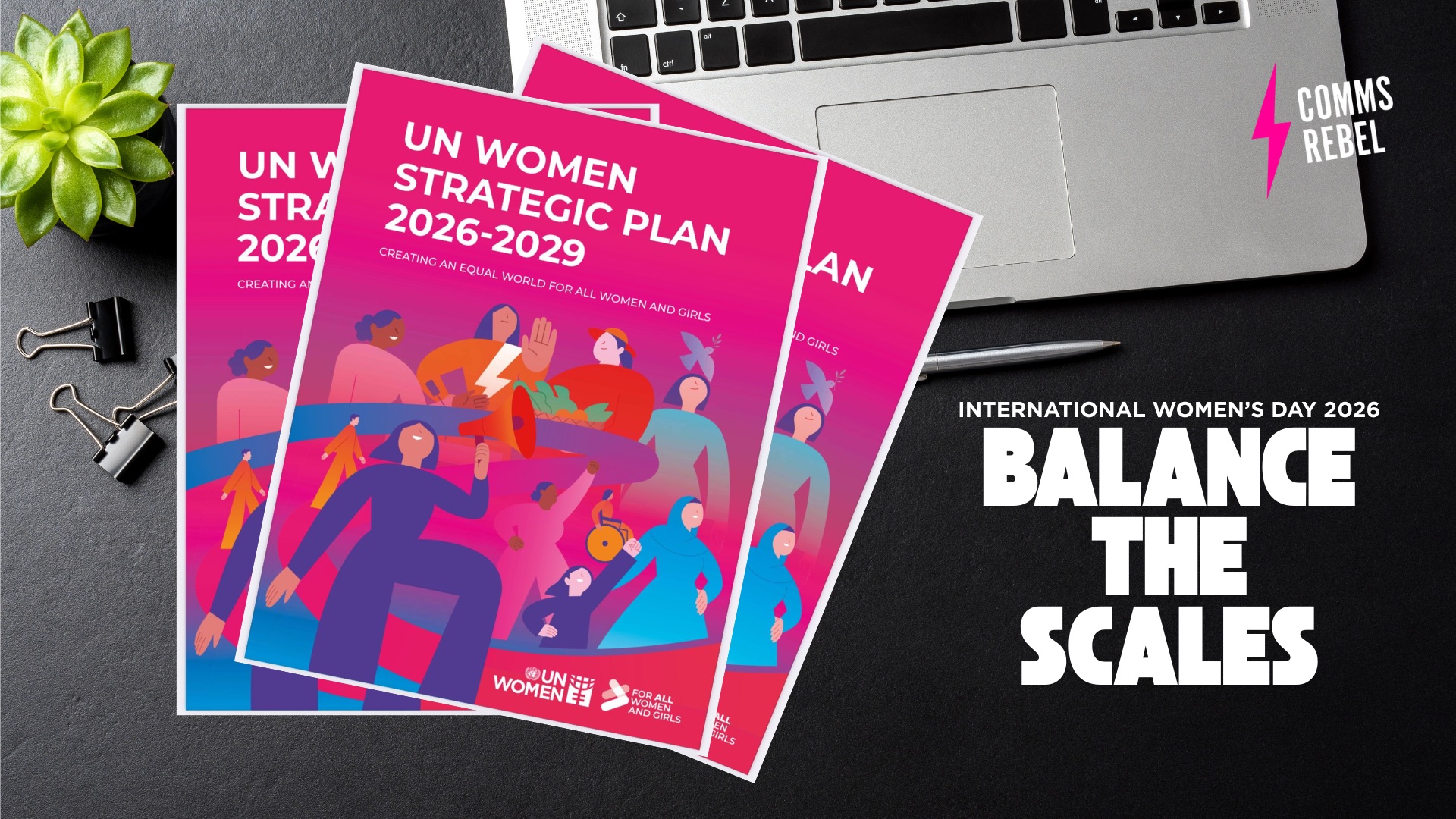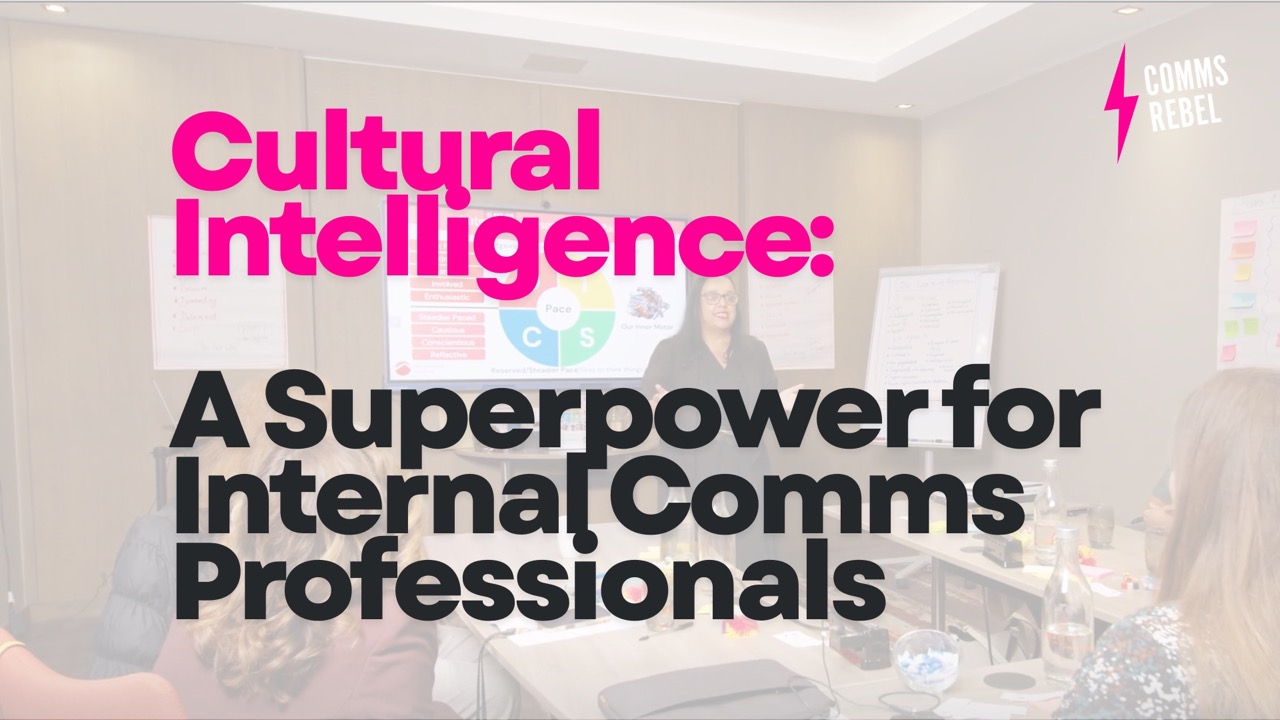What does it take to build inclusive cultures as internal communicators?
As internal communicators, it’s essential to understand how to build inclusive cultures within organisations. Here’s our practical guide to help you get started.
A thriving workplace culture relies on effective communication at its heart, making inclusion crucial for communications professionals. After all, when colleagues feel included and valued in the workplace, they are more likely to contribute fully and thrive.
There is a growing need for inclusive workplaces, especially as job seekers see inclusion as a significant factor when looking for new opportunities. According to research, 66% of UK workers say that the acceptance and inclusion of employees from all backgrounds are important to them when searching for jobs. This percentage increases especially amongst younger workers, with 78% of 18 – 24-year-olds saying it’s important to them when job hunting, compared to 60% of respondents aged over 55.
Here at CommsRebel, we strongly believe that internal communications is uniquely positioned to support an organisation’s approach to DEI. We’ve helped many clients positively disrupt their workplace cultures so colleagues can thrive. In 2023, CommsRebel founder Advita Patel co-wrote a bestselling book on building a culture of inclusivity.
Why internal communications?
As internal communicators, a big part of our role is to ensure that all voices are heard. We can do this by creating opportunities for conversations across all levels of the organisation, crafting messages aligned with the organisation’s values, connecting leaders and colleagues, and bringing people together to deliver on the organisation’s mission, purpose, and strategy.
But to do all these things effectively, we must keep inclusion at the forefront of our minds. If our colleagues don’t feel like they belong, they won’t feel connected to the organisation’s vision, mission, or strategy, leading to disengagement and poor experiences. Internal communication plays a significant role in shaping culture and fostering connections among colleagues—and this is key to building inclusion.
In this blog post, we share the steps internal communicators can take to build inclusive workplace cultures.
1. Culture is key
Use your unique position to consider an organisation’s culture. If a company culture is weak, it will determine the organisation’s success, regardless of how effective its strategy is. Nurturing and supporting the people delivering your corporate strategy’s objectives is key, otherwise, it’s unlikely that organisational goals will be met. Edgar Schein’s organisational model of culture, which outlines three levels of culture, is a good starting point.
- Artefacts are visible symbols, such as uniforms, posters, lounge chairs or free food. They can be easy to spot but difficult to decipher. Try not to allow your bias to make assumptions on artefacts alone. Spend time with colleagues and ask curious questions, especially if you are new to an organisation. On the surface, some artefacts might lead you to believe the organisation cares deeply about its people, but on further reflection after speaking to people, you might realise differently.
- Shared values are a set of values which can often influence employees to behave a certain way. Values guide how organisations make decisions, and every colleague should align with them. However, when leaders don’t practice the behaviours, there will be a disconnect. We can follow three easy steps to help embed values in the organisation.
- Reinforce shared values through written communications
- Model values in leadership behaviours
- Use storytelling to bring values to life
- Basic assumptions are the unconscious drivers behind actions and decisions within an organisation. They are rarely discussed and difficult to find, and they are often taken for granted. We miss patterns of behaviour because the ‘that’s just the way we do things here’ mindset often overrules any question about change. This basic assumption is the single biggest destroyer of cultivating inclusive cultures. Here are some points to observe…
- What’s happening around you? Are colleagues speaking up in meetings or sharing ideas?
- What do people care about?
- How do people respond when speaking with senior leaders?
- What behaviours do people ignore, and which are rewarded?
- How accessible are tools and resources? Are certain groups missing out because they don’t have access?
- How do people react in a crisis?
Assumptions can be deep-rooted and hard to unpack. As internal communicators, we should be able to share our observations. We are often in a privileged position where we see behaviours as we are independent of teams and departments.
If these assumptions are not addressed, cultivating inclusive behaviours will be challenging.
2. Start with you
As internal communicators, we have a unique responsibility to champion DEI but often are unsure of where to start. Our advice? Start modelling inclusive behaviours that you want to see, such as asking powerful questions, being curious, encouraging open dialogue and asking for regular feedback. It can feel uncomfortable and challenging, but active listening and curiosity are critical for inclusion to work. Try using our SPARK framework…
- Seek information and evidence that counters your opinion or thoughts. This will help address any biases you may have.
- Powerful questions can help you dig deeper into expanding your understanding of your point of view.
- Adjust your mindset to get into the habit of asking yourself some exploratory questions.
- Revise your thinking about your willingness to learn from others who are different from you and be open to new thoughts and ideas. This will help you build stronger connections.
- Kindness is critical when you’re exploring curiosity. You will make mistakes, and there will be viewpoints you disagree with. But it’s essential to raise your points respectfully without accusation – especially if you don’t know the context.
3. Creating safe spaces
For employees to thrive, they must feel they can speak up without fear of being punished or humiliated. This is where we can step in as communicators. We can create opportunities for conversations where colleagues are free to express themselves. Perhaps, at the start of team meetings, for example, where individuals can share any challenges they are currently having.
Also, consider if and how employees are thanked for their feedback and contributions, if at all. How is feedback communicated? Does it happen regularly? Is it constructive? We must take action once people have shared. One of the biggest causes of mistrust is not doing what you said you would. Asking underrepresented people to share how they are feeling and then not doing anything to support them is worse than not asking them in the first place.
Safe spaces give employees psychological safety, which in turn can lead to innovation and a growth mindset.
4. Shifting from postbox to strategic advisor
Many of us grapple with how to move from tactical to strategic decision-making, which is usually the domain of leaders and HR on topics of people and culture. But we’d argue that internal communications can also contribute significantly.
If an organisation is striving for an inclusive culture, communicators should be invited to the discussion, especially as we can offer an umbrella view of the organisation and appropriate guidance and advice on the best way to communicate.
Consider these questions to start with:
- How often do you review your internal communications channels to ensure they are fit for purpose and inclusive?
- How often do you debrief leaders on how to communicate and the right channels to use?
- Have you reviewed your skill levels in the top 10 attributes needed to be a successful internal communications professional?
- How much influence do you have as a communicator in your organisation? Do you have strong relationships with leaders and can you influence change?
- How are you driving culture change and bringing people together?
- Are your communications capturing hearts and minds?
- What does success look like?
If an organisation is striving for an inclusive culture, communicators should be invited to join the conversation. We can help shape the culture by providing recommendations, insights, and solutions based on our unique perspective and understanding of the organisation. By adopting a strategic approach and keeping inclusion at the forefront of our minds, we can create a workplace culture where everyone feels valued, heard, and empowered to contribute to the organisation’s success.
Key takeaways:
1. Effective communication is crucial for building an inclusive culture. As internal communicators, it’s our responsibility to ensure that all voices are heard.
2. Internal communication is uniquely positioned to support an organisation’s approach to DEI.
3. Internal communicators can start by modelling inclusive behaviours, being curious, encouraging open dialogue, and promoting diversity, equity, and inclusion.
4. If the organisation is serious about being inclusive, internal communicators should be able to contribute to strategic decision-making on topics of people and culture.
Want some more help with building inclusive cultures? Get in touch!


